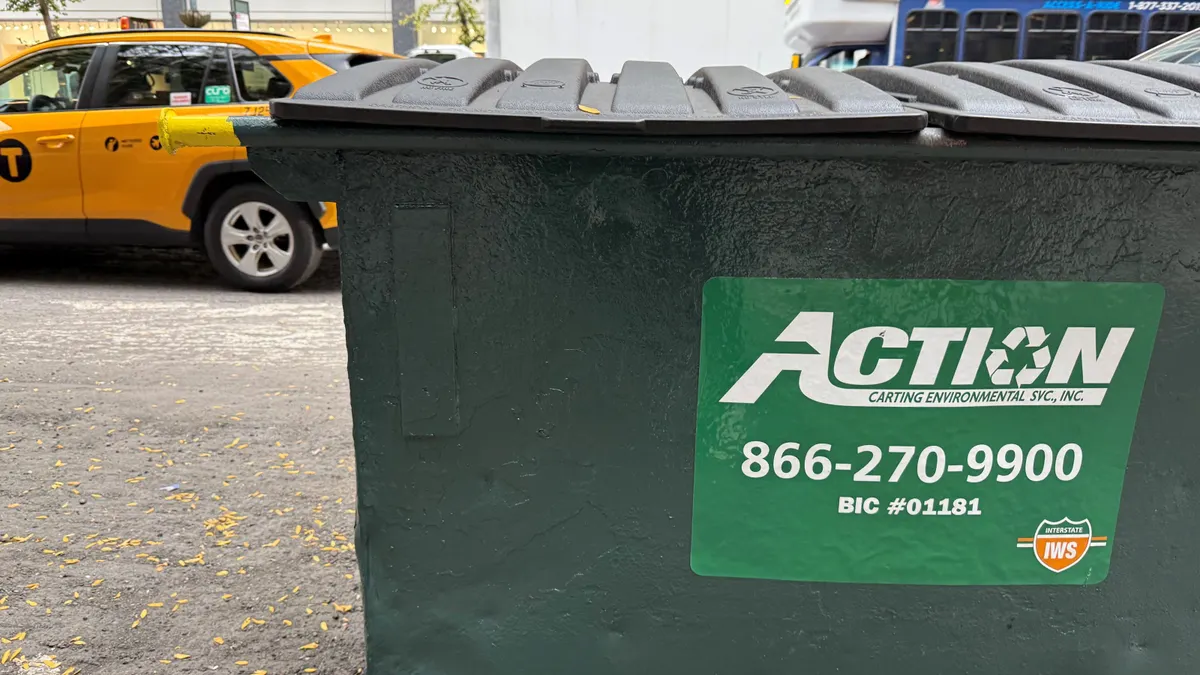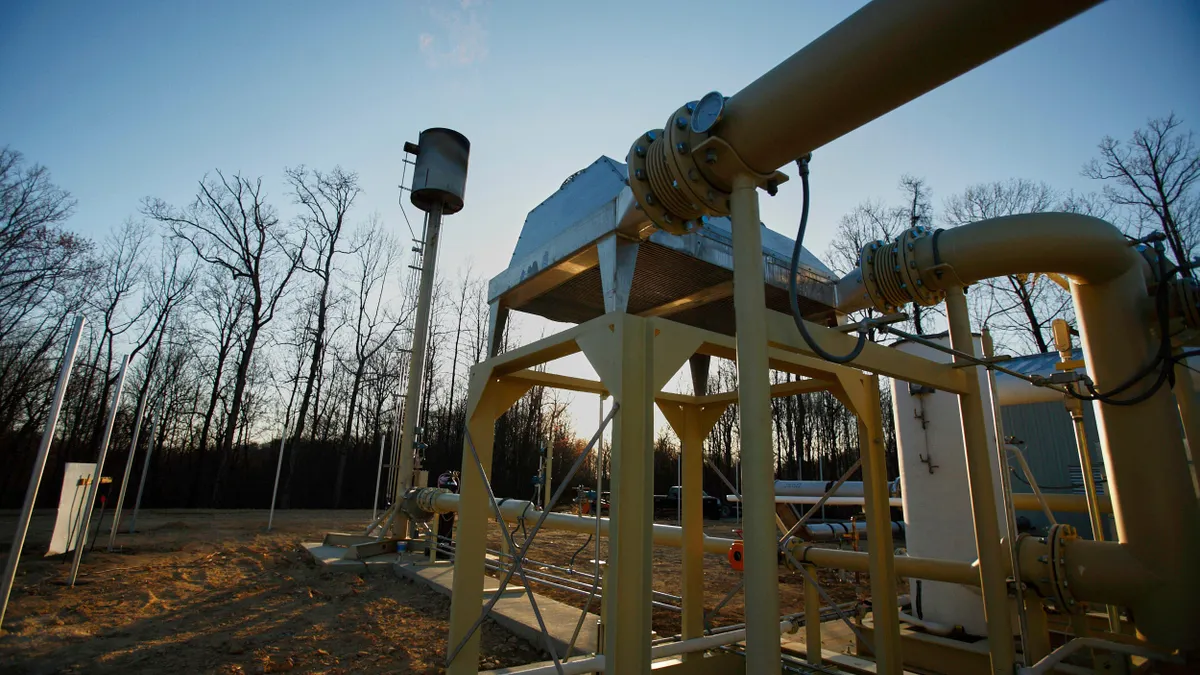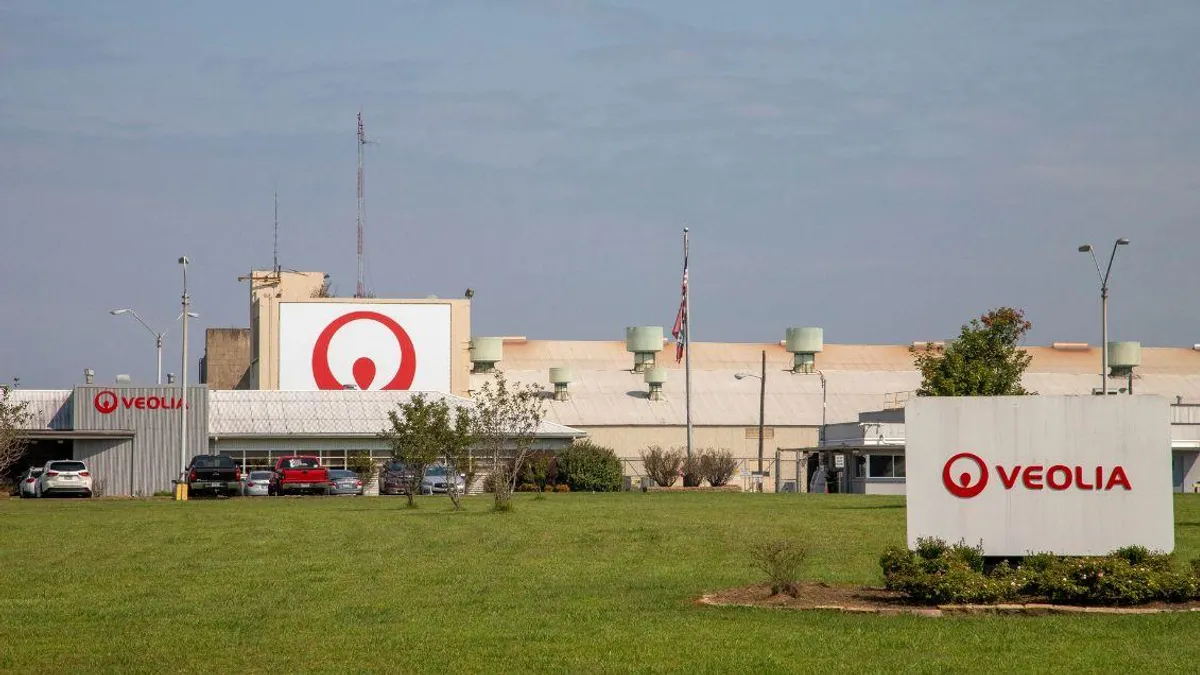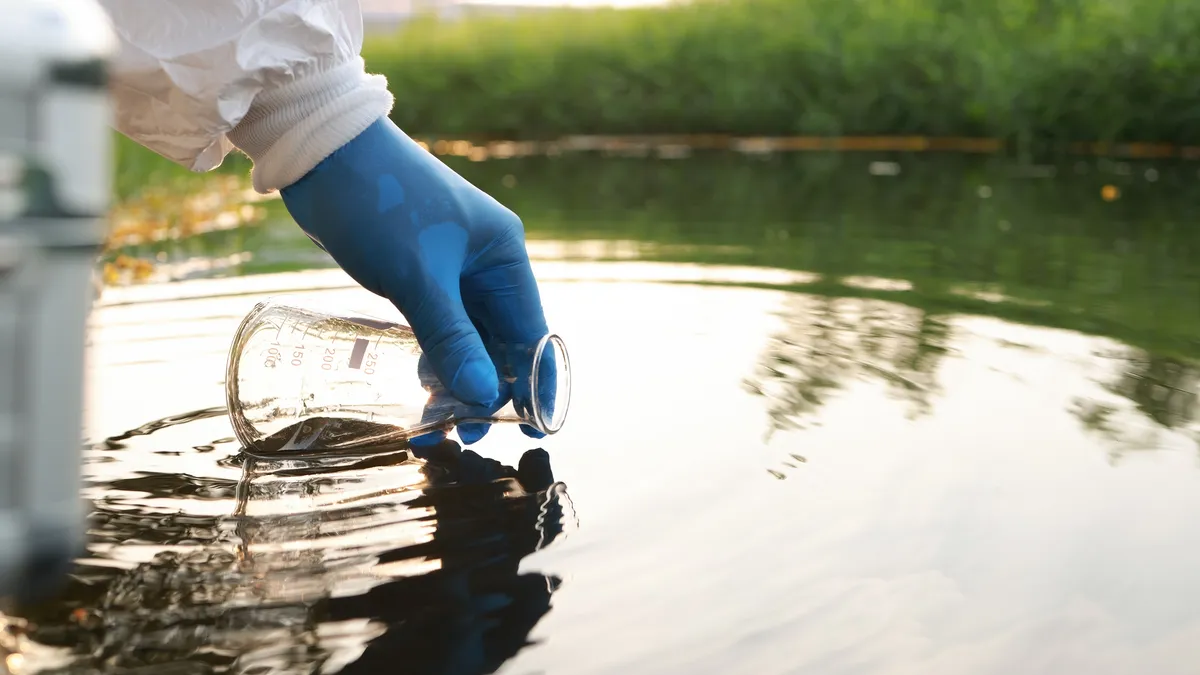Waste and recycling companies have long prioritized vertical integration. Now, changing conditions in the plastics sector are making an emerging approach — in which haulers and MRF operators invest in secondary plastics processing — more financially favorable than it was in the past.
"You see a lot of integration and you're seeing some companies buying other recycling companies," said Steve Alexander, president and CEO of the Association of Plastic Recyclers. "But this is a different twist, no question about it."
Republic Services, the country's second-largest residential hauler and recycler, recently announced it will build an integrated plastics recycling facility (PRF) in Las Vegas that should begin operations next year. The goal for what the company describes as a first-of-its-kind "polymer center" is to produce more than 100 million pounds per year of recycled plastic, including polyethylene terephthalate flake, high density polyethylene and polypropylene. It intends for at least some of the PET to be food-grade to ease increased demand in that market.
Republic representatives discussed the new facility at the recent Plastics Recycling Conference in Maryland, including how technological advancements in the last five years have unlocked new opportunities for capturing individual resins. For example, infrared sensors will allow black plastics to be captured, which is relatively rare in domestic recycling.
"The polymer center will help us increase recovery," said Pete Keller, vice president of recycling and sustainability at Republic Services, during a March 8 conference session. "We're not looking to disrupt or disintermediate, we're looking to bring higher quality, higher value materials to market."
Another large industry company also recently announced an integration project. WM Organic Growth, a wholly owned subsidiary of WM, the largest residential recycler in North America, announced a joint venture with Tailwater Capital in which they purchased a majority stake in Continuus Materials. Continuus will build a full-scale facility that converts mixed plastic and paper materials that typically aren't recycled and otherwise would get disposed into building materials such as composite roofing boards. Continuus will source feedstock from WM's collection routes, according to Plastics Recycling Update. It can also develop additional facilities at WM sites.
Chemical recycling — when plastics are depolymerized, or broken down into raw materials by applying heat and/or chemicals — is another area where recycling companies are testing partnerships with plastics processors, such as the February announcement of an agreement between FCC Environmental Services, ExxonMobil and LyondellBasell to increase the collection of plastic in Houston for this application.
Opinions vary on the validity of including chemical recycling in the same category as traditional mechanical plastics recycling. But Jeff Meyers, chief strategy officer at The Recycling Partnership, says regardless of how people feel about the practice, it is coming and will likely drive more investments in MRFs and growth in collection.
Making new business models
A unique aspect of these various integrations is how the recycling companies are dipping into sectors other than their core expertise.
"It's a different industry," Alexander said. "I mean, collecting and hauling and separating material is one thing; processing is another."
Plastics sector integration is less prevalent in the U.S. than abroad, such as in Europe, Alexander said. However, domestic recyclers are realizing economic and environmental benefits from processing the material that they already control.
"If it works, you're taking certain costs out of the system," Alexander said. "You're taking out transportation costs and some processing costs. You've taken out the transaction costs from a seller to a buyer."
Companies are figuring out how to create these new business models to improve plastics recycling and profitability, Meyers said, explaining that "vertical integration allows you to try and capture some value that you were previously sharing with someone else."
One of Republic's goals with the new PRF is to develop markets and value for materials that aren't currently considered viable. Keller said the marketplace currently has a lot of inefficiency, resulting in some PET bales having only a 60% to 65% yield. And he reports hearing a lot of interest in food-grade PET and polypropylene, but those markets are still developing. Keller anticipates they will further emerge as the PRF begins operations and helps to increase bale quality.
"We think that the market will value those materials in ways that they don't value our material today," he said. "Because we're doing all of that under the same roof, we can be real intentional... and the material that most likely is residual today is actually a recyclable, recoverable product that we can bring to the market."
Timing is everything
Many factors influence whether integrated secondary plastics ventures are successful, not the least of which is timing. Conditions appear to be more favorable to support these ventures now compared with just a few years ago, according to industry professionals.
For example, the QRS Maryland plastics recovery facility opened in 2015 but suspended operations in 2017 and closed for good in 2018. QRS Recycling and Canusa Hershman Recycling collaborated to create the facility, and each oversaw different aspects of the venture: Canusa Hershman acquired feedstock, and QRS operated the processing facility.
The $15 million PRF initially was heralded as a potential industry game changer for its ability to process hard-to-recycle plastics — mixed Nos. 3-7 bales — and attempt to build those markets. It had the capacity to process 4,500 pounds of material per month, which it sourced from East Coast MRFs for additional sorting. But a company statement at the time of closure cited economic challenges in the post-consumer resin market.
"Their timing wasn't great relative to the pricing of virgin material and oil," Alexander said. "They ran into a tsunami of external factors that had an impact on that operation."
High oil prices push up virgin resin prices, thus helping to increase demand for recycled plastics, as is the case in the current market. Brand commitments to use greater amounts of recycled content in their products have also positively influenced demand. The bump in demand factors strongly into the business case for integration and infrastructure investments.
"I think there's a little bit more confidence that this demand market is here to stay... and it might be more beneficial financially to try and get into the supply market rather than just a diversion market," Alexander said.
Although recycled resin demand is strong, supply lags. That begs the question of whether haulers' new integrated facilities — namely, Republic's Las Vegas plant — will pull business away from existing processors or if they will pull new volumes into the system.
"It's not providing a new supply of materials, it's just moving the supply from one facility to another," said Susan Collins, president of the Container Recycling Institute, adding that more work is needed to expand the market for recycled content that can be used in food-grade packaging. "It'll just change who is processing it."
The Las Vegas facility will handle material that Republic collects from its markets in the West and Keller referenced a regional hub-and-spoke model. Analysts say the western U.S. suffers from certain plastics recycling difficulties, and many industry participants are watching integration projects to see whether they improve the issues and are worth replicating.
"The West Coast has seen some challenges with logistics of moving certain resins — polypropylene as an example," Meyers said. "Some of the markets out West have been challenged because there isn't necessarily as much domestic polypropylene capacity."
In addition, a law went into effect in California this year that will ultimately require 50% recycled content in plastic beverage containers by 2030. A similar law takes effect in Washington next year. The mandates are affecting supply and demand dynamics for postconsumer resins.
"There's only a certain amount of supply of that super clean food-grade material," Collins said. "That sets the stage for why there would be an opportunity now to vertically integrate into a plastics production facility: There's more demand because of the need for food-grade material."
She cautions that Republic's Las Vegas facility will handle material collected curbside instead of through California's beverage container redemption program. The material collected through the deposit system is higher quality and better suited to the high standards required for making new food-grade containers from recycled content, she said, noting that compliance with the standards is necessary to capitalize on the increased material demand. Collins said expanding beverage container redemption programs would increase the supply of food-grade material.
Beyond the realm of container deposit material, Republic CEO Jon Vander Ark said at the Maryland conference the company is exploring taking third-party material at the Las Vegas facility and future PRFs. The company, which has its own sustainability goals to increase recycling volumes, also intends to build additional facilities and is exploring options in the Midwest, Southeast and Northeast.
Analysts believe favorable outcomes at the already announced integrated facilities could drive more of this activity in the industry, though a lack of success could potentially stall this type movement toward vertical integration for plastics.
"We are going to see more and more plastics recycling investments, and we're going to see companies looking for ways to capture value," said Meyers, adding he anticipates more investments from the recycling industry to scale up infrastructure at new and existing facilities. "This vertical integration... is one example of companies looking for a way to capture value in the recycling system."


















